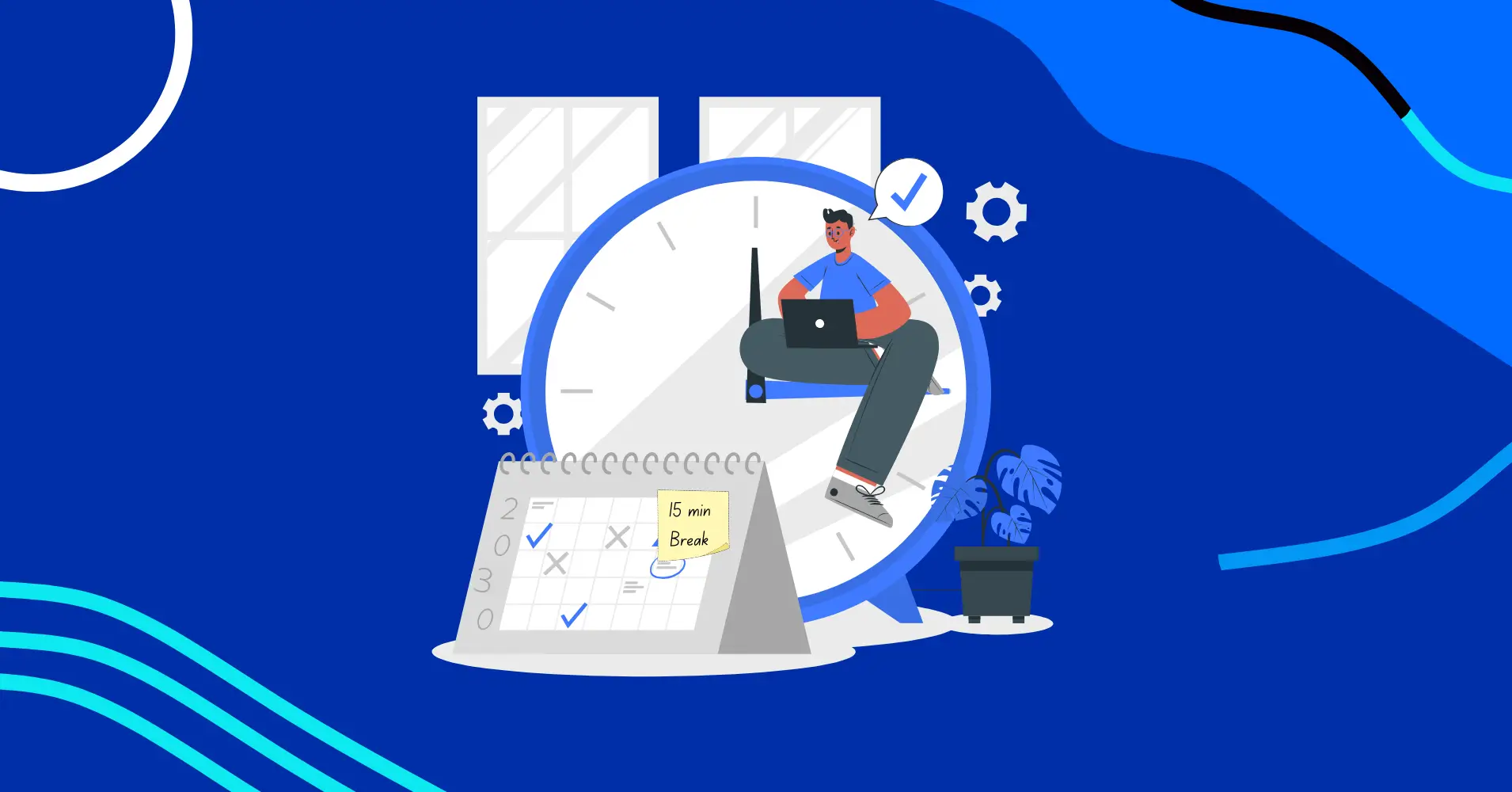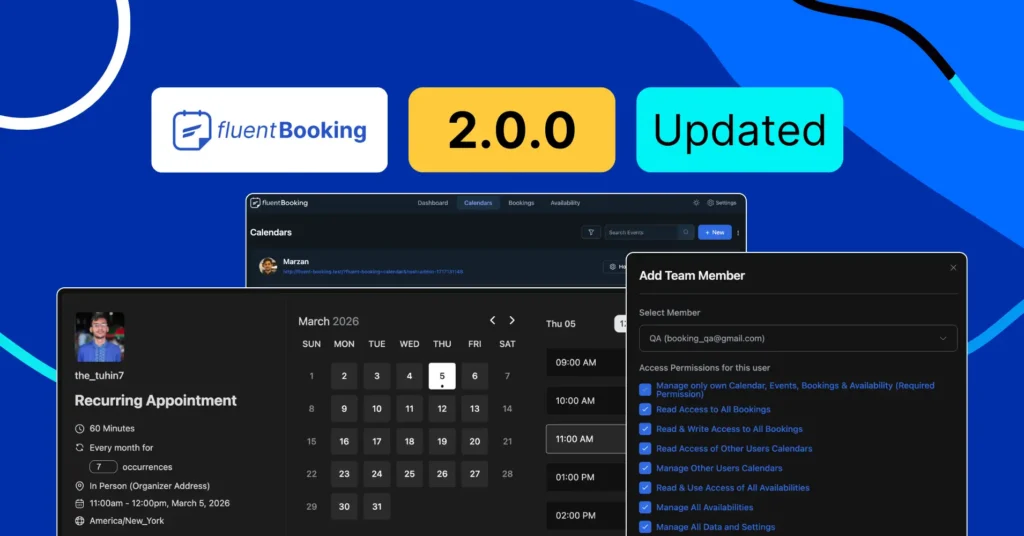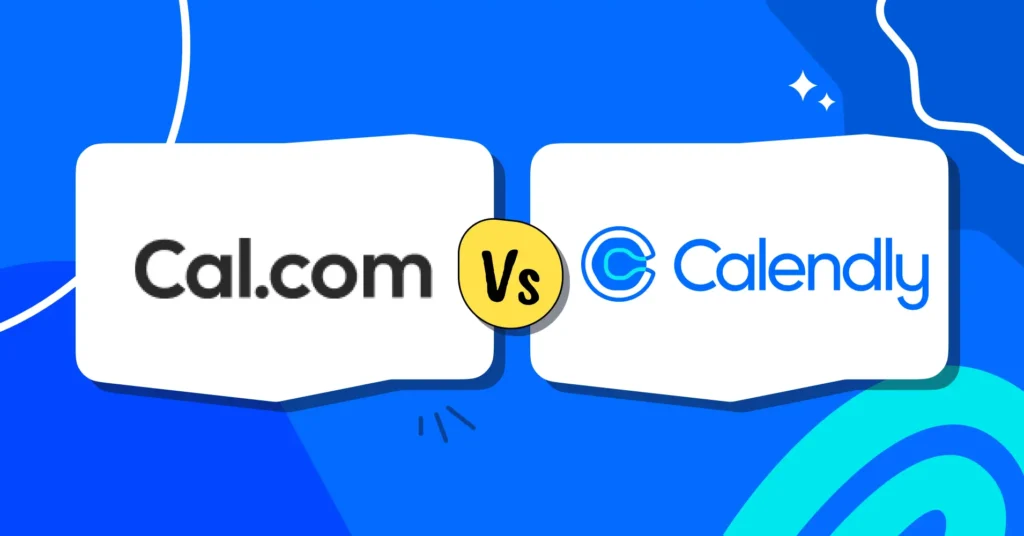
What is Buffer Time and How to Set it up with FluentBooking
When you’re running a WordPress site and juggling appointments, meetings, or consultations, your schedule can get hectic. A meeting runs late, an unexpected task pops up, or you just need a breather before jumping into your next call. That’s where buffer time comes in.
Whether you’re a busy professional, a team leader, or someone simply trying to organize their personal schedule through your WordPress site, understanding how buffer time works can completely reshape the way you manage your day. And with a plugin like FluentBooking, setting up a buffer period isn’t just easy, it’s essential.
In this blog, we’ll break down what buffer time really means, why it’s more than just “extra minutes,” and how you can set it up seamlessly with FluentBooking to simplify your scheduling and reduce stress.
What is Buffer Time: A Quick Overview
Buffer time is extra time intentionally added between scheduled tasks, meetings, or events to account for potential delays, interruptions, or unexpected situations. It acts as a safety net in your schedule, providing flexibility, reducing stress, and helping you stay on track without feeling rushed.
For example, if someone books a 30-minute meeting with you at 2:00 PM, and you’ve set a 15-minute buffer afterward, the next available slot on your calendar won’t be until 2:45 PM. This ensures you have time to wrap up the meeting, take notes, or reset before the next one.
It is an extra time you add between meetings, tasks, or events to handle unexpected delays or interruptions. It acts as a safety net in your schedule, giving you flexibility, reducing stress, and helping you stay on track without feeling rushed.
By using buffer time, you can avoid the pressure of tight schedules, missed deadlines, and the need to rush through important work.
Examples: When Buffer Time Comes in Handy for Appointment Scheduling
- A consultant needs 15 minutes before each session to review client details and prepare mentally.
- A healthcare professional wants a short break after every appointment to take notes or sanitize the space.
- A coach or therapist adds extra time between sessions to accommodate occasional overruns or last-minute reschedules.
Benefits of Adding Buffer Time
- Lowers Stress: Buffer time helps you manage unexpected delays without feeling overwhelmed. It gives you breathing space, so your day feels more under control and lowers your stress levels.
- Improve Productivity: A sweet spot between tasks allows you to reset and prepare for what’s next. This leads to more focused and effective work.
- Adds Flexibility: When plans change,a buffer period makes it easier to adapt without derailing your schedule. It’s a built-in safety net for handling the unexpected.
- Prevents Missed Deadlines: With extra time in your schedule, you’re less likely to run late or fall behind. It helps you stay on track and meet deadlines consistently.
- Supports Healthier Work-Life Balance: Instead of powering through back-to-back appointments, buffer time creates intentional spare time. That breather might just be the difference between burnout and balance.
Where Should You Add Buffer Time?
- Between Client Meetings: Having time between meetings ensures you can take notes, prepare for the next session, or just relax.
- Between Task Blocks: When using time blocking for deep work, buffers helps you to prevent schedule overruns and maintain focus.
- In Personal Schedules: From errands to family calls, buffer time isn’t limited to professional life—it helps in daily life too.
Challenges You May Face When Adding Buffer Time
- Requires thoughtful planning to avoid wasted time.
- Needs strategic use to prevent overcommitment or procrastination.
- It can be hard to manage with multiple tasks or projects.
- It can be tricky to know how much buffer time is “just right”—too little causes stress, too much eats into productivity.
What Happens Without Buffer Time?
If you don’t set any buffer time, your available appointment slots will appear tightly packed, like this:

As you can see, there’s no room to breathe between sessions, which can quickly become overwhelming. As a result, your appointments can be backed up. That’s why you must set an extra time between your appointments.
How to Set Buffer Time in FluentBooking?
If you need to schedule multiple appointments, meetings, or consultations, FluentBooking is the perfect tool for managing them all from your WordPress site.
With FluentBooking, you can customize buffer period for each service type, setting different durations before or after appointments to suit your workflow perfectly. Whether you need time to prep, follow up, or reset, buffer time helps you run a more organized and professional appointment system..
So, let’s see how you can set the buffer time in a few easy steps:
Step 1: Open your FluentBooking dashboard and go to the Calendar tab.

Step 2: Choose to edit an existing event or create a new one.
To create a new event: Click “New Event Type” → “Select the meeting type”, then enter your Event Name, Description, Meeting Duration, and Location. Click Continue to save.

Step 3: Once the event is created, you’ll see it listed in the Calendar tab. Click the “Edit” button next to the event.

Step 4: Scroll down to the Limits section. On the right side, you’ll find options to set buffer time before and/or after the appointment.

Step 5: Set your desired buffer duration—like 10, 15, or 30 minutes—based on your preference.
Step 6: Click “Save Changes” and you’re done! FluentBooking will now automatically include buffer time in your booking availability.
How Buffer Time Affects Your Booking Availability
Once you set buffer time before or after your appointments, FluentBooking automatically adjusts your available time slots on the booking page. This ensures you never get booked back-to-back and always have time to reset, prep, or take notes.
Let’s say you’re a consultant offering 30-minute sessions and you add a 15-minute buffer after each appointment. If a client books a slot at 10:30 AM, the next available time on your booking page will now be 11:30 AM, not 11:00 AM.

Here’s what happens:
- 10:30 AM – 11:00 AM → Meeting duration
- 11:00 AM – 11:15 AM → Buffer Period
- 11:15 AM – 11:30 AM → Automatically blocked by FluentBooking to maintain consistency
- 11:30 AM → Next available slot
Note: You’ll also notice that the time slot before 10:30 AM is no longer available. Additionally, the 10.00 AM slot disappears automatically because FluentBooking inserts buffer time before the 10:30 meeting as well, ensuring no back-to-back pressure for the person who books at 9:30.
This smart scheduling logic helps you stay fully present for each client, reduce no-shows, and maintain a smoother appointment flow throughout the day.
Stay On Schedule and Say Goodbye to Back-to-Back Burnout!
FluentBooking lets you set buffer time between appointments, reduce no-shows, and give yourself space to breathe—all from your WordPress site!

Bonus: More Smart Scheduling Controls in FluentBooking
Beyond buffer time, FluentBooking gives you powerful scheduling features to keep your calendar clean, your time protected, and your client experience consistent. Here are a few extra tools worth exploring:

- Limit Booking Frequency: Don’t want to be booked back-to-back all day? With this setting, you can control how often a particular event type can be booked, so you have more control over your availability and energy levels.
- Limit Total Booking Duration: Want to cap how much time is booked for a specific event in a day? This option lets you set a total time limit, so even if multiple clients are booking, the event won’t exceed the maximum duration you’ve defined.
- Lock Timezone on Booking Page: If you’re hosting in-person events or appointments in a specific location, this feature locks the timezone on your booking page. It ensures that all clients see the schedule in your local time, eliminating confusion and missed appointments due to time zone mix-ups.
Wrap Up: Give Yourself the Time You Deserve
Buffer time isn’t just about adding a few extra minutes—it’s a smarter way to manage your day. It helps you handle unexpected delays, avoid rushing between appointments, and reduce your stress levels.
By giving yourself a bit of sweet spot, you’ll stay more focused, feel more in control, and keep your schedule running smoothly.With FluentBooking, setting buffer time is simple.
You can add time before or after meetings, adjust your appointment buffer time duration, and customize it based on the service you’re offering. Whether you want more prep time, time to wrap up notes, or just a short break between sessions, FluentBooking gives you the flexibility to do it all.
Frequently Asked Questions
Ratul Ripon
I enjoy making complex ideas simple and engaging through my writing and designs. With a strong knowledge on content writing and SEO, I create technical content that’s both easy to understand and interesting.
Table of Content
Subscribe To Get
WordPress Guides, Tips, and Tutorials











Leave a Reply